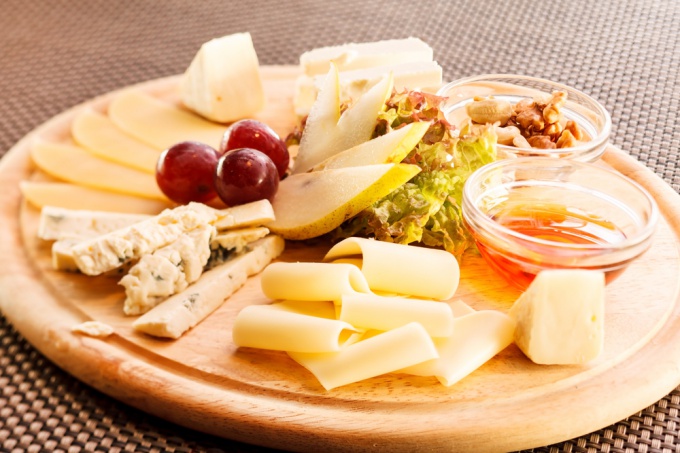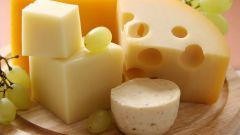What is cheese made in different countries
Different countries famous for their cheeses: France, for example, there are more than 600 varieties; and in Switzerland, cheese is a national treasure, a delicacy comparable to the chocolate; and in Italy, is one of the most essential components of almost any dish.
If we talk about soft cheeses, such delicacy is appropriate not just for the cheese plate, it can be served along with a chilled beer or wine and crispbread. While one portion of France or Germany may be considered a full lunch or a light dinner. A famous and incredibly soft brie cheese (Brie) and all the Parisians like to use in coffee as cream.
Talking about hard cheeses, it is worth remembering that they are served usually at the end of the main meal as a dessert, either directly in front of him. This cheese is recommended to drink exceptionally dense red wine, avoiding combinations with white wines. Also great warm port wine or sherry.
Cheeses with mold, usually eaten separately, with nothing mixing. It is believed that the only way the cheese is capable of opening fully. In a pinch, you can use it together with arugula, as do the Italians.
Recognized experts in the cheese around the world – the French serve cheese with fruit. Later this tradition was adopted by other countries. At the same time to different varieties need to apply strictly defined fruit. So, for example, to the soft varieties suitable for apples and pears; solid – pineapple, kiwi and cherry, noble blue varieties are served, for example with grapes. Cheeses of any kind is perfectly suited walnuts, almonds and even honey.
In addition, certain types of cheeses are actively used as key ingredients of various dishes. So, soft curd Ricotta cheese (Ricotta) can be eaten as a standalone snack, and fill them with salads and pasta, add to sauces and other dishes. Parmesan (Parmigiano Reggiano) is famous for its incredibly delicious combination with any pasta besides grated, it will perfectly complement any light vegetable salad. Gruyère (Gruyère) – another hard cheese, which is capable of baking any dish to form a smooth crisp.
The classic combination of cheeses with wines
Based on the intensity of cheese flavor, it is necessary to choose the appropriate wine. For example, richer than he is, the more complex the bouquet of the wine can be submitted. Red wines perfectly complement the taste of hard sharp cheeses, but not too salty, and semi-good light fruity young wines. Soft creamy cheeses will complement the dry and semi-dry wines. Well to blue cheeses and cheeses with mould should choose fortified wine or more spirits. And the Sauvignon or Chardonnay, well set off with goat or sheep cheese.
The rules of forming a cheese plate
Before serving, it is recommended to get the cheese out of the refrigerator about an hour to the taste and flavor was the most comprehensive and managed to open up. At the same time on one plate you can combine cheeses (but not more than 6), the main rule is to lay them on the rise of intensity of taste: that is, first neutral, then richer, then spicy and sharp. To eat cheese is in the same order to experience the entire flavor palette.
For example, cheese Reblochon (Reblochon) or Tom (Toma) have a neutral flavor, cheeses from goat's or sheep's milk are the tender varieties, and Camembert (Camembert) or brie (Brie) have a pronounced taste and aroma, to achieve the same cheese composition can be noble blue cheese with mold, having a peculiar pungent taste.
It is not necessary to slice the cheese too thin slices. If the cheese plate is served as a dessert, cheese (especially hard varieties), it is recommended to cut into cubes.
In addition to fruits and vegetables, a cheese plate can be complemented with slices of crunchy fresh bread or croissants, but from a different kind of sauces and seasonings should be abandoned. In a pinch, can be served with cheese, green onions, garlic and hot pepper.




